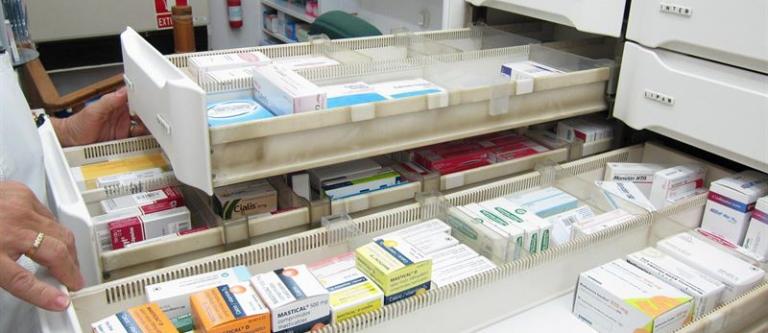
1.- Hechos.
La compañía farmacéutica Novartis comercializa un medicamento con la marca FEMARA en los Países Bajos y Bélgica. A su vez, Sandoz (división de Novartis) comercializa ese mismo medicamento, pero en formato genérico, con la marca LETROZOL SANDOZ, también en los Países Bajos y Bélgica.
Impexeco, entidad dedicada al comercio paralelo de medicamentos, importa desde los Países Bajos el medicamento genérico LETROZOL SANDOZ y comienza a comercializarlo en Bélgica con un nuevo embalaje en el que ha colocado la marca del medicamento de referencia, esto es, la marca FEMARA.
Cabe mencionar que, en los Países Bajos, el precio del medicamento de referencia (FEMARA) y el del medicamento genérico (LETROZOL SANDOZ) es idéntico, mientras que, en Bélgica, el precio de este último es netamente inferior.
Novartis demandó a Impexeco por entender que la conducta de ésta constituía una vulneración manifiesta de sus derechos de marca.
Impexeco se defendió invocando la doctrina del TJ (Upjohn C-379/97) y alegando que la oposición de Novartis a su conducta arriba descrita constituía un obstáculo al comercio intracomunitario que provocaba una compartimentación artificial de los mercados entre los Estados miembros, habida cuenta de que, en este caso, tanto el medicamento de referencia como el genérico habían sido comercializados por empresas vinculadas económicamente.
El tribunal belga que conocía del litigio decidió plantear una cuestión prejudicial al TJ para pedir que se pronunciase sobre la interpretación que, en una situación como la descrita, ha de darse a los artículos 9.2 y 13 del Reglamento nº 207/2009 sobre la marca de la UE (en adelante, “Reglamento de marca de la UE”); concretamente, para determinar si, en un caso como el anterior, el titular de la marca está o estaría facultado para oponerse a la conducta llevada a cabo por el importador paralelo arriba descrita.
2.- Pronunciamientos.
La Sentencia del TJ acumula dos asuntos, el referido al litigio arriba descrito, entre Novartis e Impexeco, y a otro, de idéntica problemática, que enfrentaba a Novartis y a otra entidad dedicada al comercio paralelo de medicamentos (PI Pharma).
El TJ comienza repasando la extensa jurisprudencia ya dictada por el propio Tribunal en materia de importaciones paralelas y derechos de marca, en particular, la referida al reenvasado de medicamentos importados. Esta jurisprudencia ha venido fijando las condiciones bajo las cuales el titular de una marca de medicamentos puede oponerse legítimamente a la importación paralela, reenvasado y posterior comercialización de esos medicamentos en otro Estado miembro.
Una de esas condiciones es que dicha oposición del titular de la marca no contribuya a compartimentar artificialmente el mercado entre los Estados miembros. Y se entiende que tal circunstancia concurriría en los casos que el reenvasado del medicamento sea objetivamente necesario para que el producto importado de forma paralela pueda comercializarse en el Estado miembro de importación.
Es esa condición precisamente la que la demandada en este caso (Impexeco) negaba que se cumpliera.
Pues bien, para resolver esta cuestión, el TJ hace varias consideraciones, entre las que cabe destacar las siguientes:
- Que el requisito de que el reenvasado sea objetivamente necesario para que el producto importado de forma paralela pueda comercializarse en el Estado miembro de importación no se cumple cuando el importador paralelo puede comercializar dicho producto con su marca de origen, adaptando, en su caso, el embalaje, para satisfacer las exigencias del mercado del Estado miembro de importación.
- Que el derecho del titular de una marca a oponerse a la comercialización, bajo dicha marca, de productos reenvasados por un importador paralelo no puede limitarse cuando la sustitución de la marca de origen por otra marca del titular esté motivada exclusivamente por la búsqueda de una ventaja económica, como ocurre, en particular, cuando un operador económico pretende aprovecharse del renombre de la marca de un medicamento de referencia o posicionar un producto en una categoría más rentable.
Y responde a la cuestión prejudicial declarando que los artículos 9.2 y 13 del Reglamento de la marca de la UE deben interpretarse en el sentido de que el titular de la marca de un medicamento de referencia y de la marca de un medicamento genérico puede oponerse a la importación y comercialización en otro Estado miembro de ese medicamento genérico cuando se ha reenvasado en un nuevo embalaje en el que se ha colocado la marca del medicamento de referencia, a menos que: (a) ambos medicamentos sean idénticos en todos los aspectos (lo cual concurría en este caso); y (b) la sustitución de la marca cumpla los requisitos establecidos en la jurisprudencia para impedir que el titular pueda legítimamente oponerse (es decir, que sea objetivamente necesaria para que el producto pueda comercializarse en el Estado de importación -lo cual no concurría en este caso-).
3.- Comentario.
A la vista de la respuesta del TJ, parece que podría resultar admisible que un importador paralelo pueda, siempre que se cumplan las condiciones establecidas en la jurisprudencia, sustituir la marca del medicamento importado por otra marca del mismo titular. Esta respuesta viene sin duda influida por la Sentencia del TJ en el caso Upjohn (arriba citada) en la que excepcionalmente se admitió tal posibilidad, pues, en ese caso, había una norma interna del Estado importador que prohibía la utilización en ese Estado de la marca utilizada en el Estado de exportación: es decir, en ese caso, el cambio de la marca era objetivamente necesario para que se pudiera comercializar el medicamento en el Estado de importación. No obstante, en términos generales, salvo que concurran situaciones anómalas, como la del caso Upjohn, parece difícil concebir una situación en la que la sustitución de la marca del medicamento por otra marca distinta resulte objetivamente necesaria para que el medicamento pueda comercializarse en el Estado de importación. Como principio, el importador paralelo no está facultado ni debe estarlo para cambiar la marca del producto importado y sustituirla por otra marca distinta (por mucho que pertenezca al mismo titular), pues tal conducta constituye claramente una infracción de marca.
María CADARSO
Nota: Estimado lector este comentario jurisprudencial procede del Anuario Elzaburu. Usted podrá acceder al resto de comentarios del Anuario que se hallan publicados en el portal de Elzaburu (https://elzaburu.com/) para lo cual solo tendrá que incluir en el apartado Buscar 🔍 del portal el término Anuario Elzaburu para así poder acceder a los contenidos ya publicados.
VERSIÓN EN INGLÉS
1. Parallel import of a generic medicinal product which has been repackaged in new packaging bearing the trademark of the reference medicinal product. Judgment of the Court of Justice of 17 November 2022, Impexeco (C-253/20 and C-254/20).
1.- Background.
The pharmaceutical company Novartis markets a medicinal product under the trademark FEMARA in the Netherlands and Belgium. Sandoz (a division of Novartis) markets that same medicinal product, but in generic form, under the trademark LETROZOL SANDOZ, also in the Netherlands and Belgium.
Impexeco, a company engaged in the parallel trade in medicinal products, imported the generic medicinal product LETROZOL SANDOZ from the Netherlands and started marketing it in Belgium with new packaging to which it had affixed the trademark of the reference medicinal product, namely, the trademark FEMARA.
It should be noted that, in the Netherlands, the price of the reference medicinal product (FEMARA) and that of the generic medicinal product (LETROZOL SANDOZ) is identical, whereas in Belgium the price of the latter is significantly lower.
Novartis brought an action against Impexeco on the ground that Impexeco's conduct constituted a manifest infringement of its trademark rights.
In its defence, Impexeco invoked case-law of the CJ (Upjohn C-379/97) and argued that Novartis' opposition to its conduct described above constituted an obstacle to intra-Community trade which led to an artificial partitioning of the markets between Member States, given that, in this case, both the reference medicinal product and the generic medicinal product had been placed on the market by economically-linked undertakings.
The Belgian court hearing the case decided to refer a question to the CJ for a preliminary ruling on the interpretation to be given, in a situation such as the one described above, to Articles 9(2) and 13 of Regulation No. 207/2009 on the EU trademark ("the EU Trademark Regulation"); specifically, to determine whether, in a case such as the one outlined above, the trademark proprietor is or would be entitled to oppose the conduct carried out by the parallel importer described above.
2.- Findings.
The CJ's judgment joins two cases, one relating to the dispute described above, between Novartis and Impexeco, and the other, concerning the same issue, between Novartis and another company engaged in the parallel trade in medicines (PI Pharma).
The CJ begins by reviewing the extensive case-law already handed down by the Court itself on parallel imports and trademark rights, in particular that relating to the repackaging of imported medicinal products. That case-law has laid down the conditions under which the proprietor of a trademark for medicinal products may legitimately oppose the parallel importation, repackaging and marketing of those medicinal products in another Member State.
One of those conditions is that such opposition by the trademark proprietor must not contribute to the artificial partitioning of the market between the Member States. It is understood that such a condition would be met where the repackaging of the medicinal product is objectively necessary in order to enable the product imported in parallel to be marketed in the importing Member State.
It is precisely that condition which the defendant in this case (Impexeco) denies was satisfied.
In order to resolve this issue, the CJ sets out several considerations, including the following:
- That the condition that the repackaging be objectively necessary for the product imported in parallel to be marketed in the importing Member State is not satisfied where the parallel importer is able to market that product under its trademark of origin, by adapting, where appropriate, the packaging to meet the market requirements of the importing Member State.
- That the right of the proprietor of a trademark to oppose the marketing, under that trademark, of products repackaged by a parallel importer cannot be limited where the replacement of the trademark of origin by another trademark of the proprietor is motivated exclusively by the pursuit of an economic advantage, as is the case, in particular, where an economic operator seeks to take advantage of the reputation of the trademark of a reference medicinal product or to position a product in a more profitable category.
The CJ answers the question referred for a preliminary ruling by declaring that Articles 9(2) and 13 of the EU Trademark Regulation must be interpreted as meaning that the proprietor of the trademark of a reference medicinal product and the trademark of a generic medicinal product may oppose the importation and marketing in another Member State of that generic medicinal product where it has been repackaged in new packaging to which the trademark of the reference medicinal product has been affixed, unless: (a) the two medicinal products are identical in all respects (which would be the case here); and (b) the replacement of the trademark meets the requirements laid down in case-law to prevent the holder from legitimately opposing it (that is, it is objectively necessary in order to enable the product to be marketed in the importing Member State, which was not the case here).
3.- Remarks.
In view of the CJ's answer, it seems that it could be admissible that a parallel importer may, provided that the conditions laid down in case-law are met, replace the trademark of the imported medicinal product with another trademark of the same proprietor. This answer is undoubtedly influenced by the CJ's judgment in the Upjohn case (cited above) which exceptionally allowed such a possibility, since in that case, there was a domestic rule in the importing Member State prohibiting the use in that Member State of the trademark used in the exporting Member State: that is, in that case, the change of the trademark was objectively necessary in order for the medicinal product to be marketed in the importing Member State. Generally speaking, however, in the absence of anomalous situations, such as that in the Upjohn case, it seems difficult to conceive of a situation where the replacement of the trademark of the medicinal product with a different trademark is objectively necessary in order for the medicinal product to be marketed in the importing Member State. As a matter of principle, the parallel importer is not entitled and should not be entitled to change the trademark of the imported product and replace it with a different trademark (even if it belongs to the same proprietor), as such conduct clearly constitutes trademark infringement.
María CADARSO
ElDerecho.com no comparte necesariamente ni se responsabiliza de las opiniones expresadas por los autores o colaboradores de esta publicación









